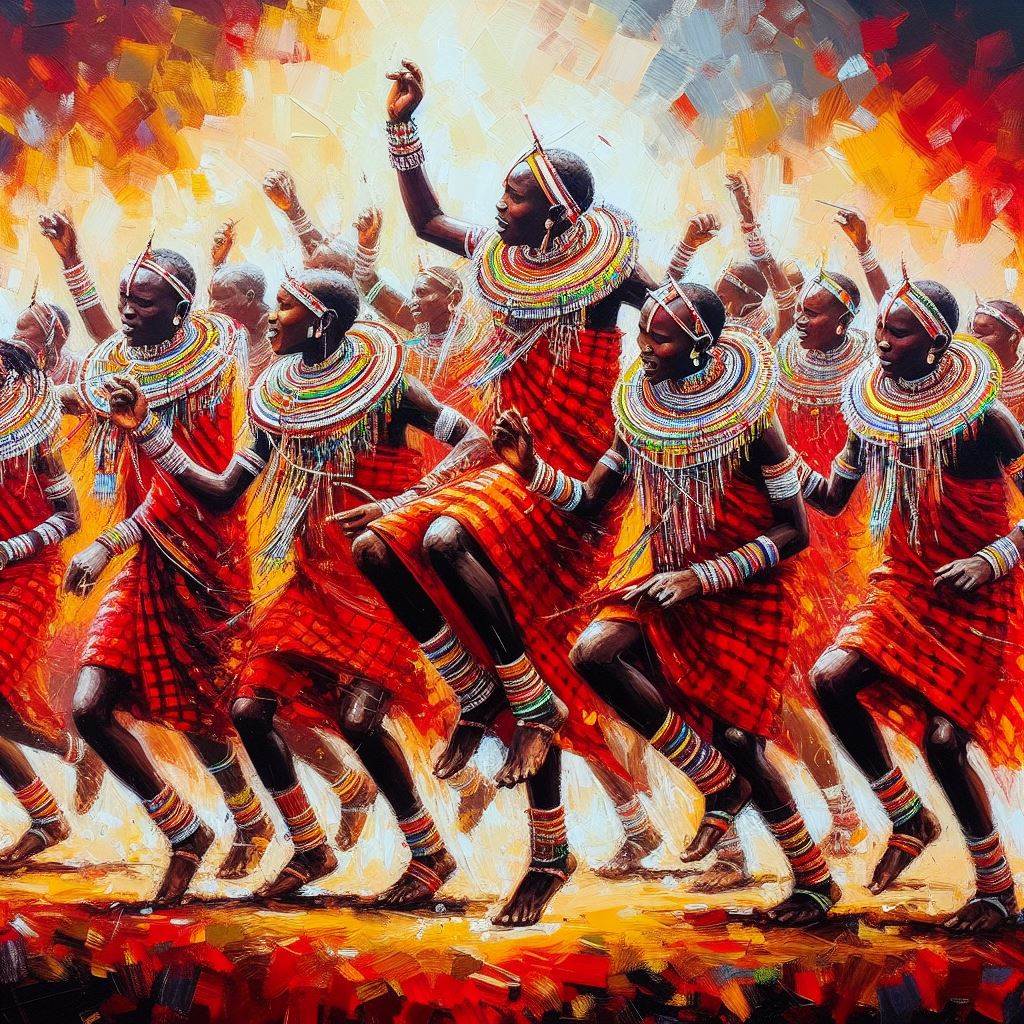Tingatinga paintings are a vibrant and distinctive form of African art that originated in Tanzania in the second half of the 20th century. Named after its founder, Edward Said Tingatinga, this art style is characterized by bold colors, intricate patterns, and whimsical depictions of African wildlife and everyday scenes. Tingatinga paintings have gained international recognition for their unique aesthetic and cultural significance.
-
Origins: The emergence of Tingatinga paintings in the 1960s marked a significant development in the landscape of African art, particularly in Dar es Salaam, Tanzania. At this time, Tanzania was undergoing a period of cultural and political change following its independence from colonial rule. It was against this backdrop of newfound national identity and artistic freedom that Edward Said Tingatinga, a Tanzanian artist, began to explore new avenues for creative expression.
Edward Said Tingatinga was born in 1932 in the rural village of Namochelia in southern Tanzania. Growing up in a society where traditional art forms such as woodcarving and pottery were prevalent, Tingatinga developed an early appreciation for artistic craftsmanship and cultural heritage. However, it was not until later in life, during his time living in Dar es Salaam, that he would embark on his journey as a painter and pioneer of a new artistic style.
In the bustling urban environment of Dar es Salaam, Tingatinga found himself confronted with the challenges of making a living in a rapidly changing economy. Inspired by the vibrant colors and bold patterns of indigenous African art, as well as the demand for souvenirs and decorative items among tourists and expatriates, Tingatinga saw an opportunity to combine his artistic talents with his entrepreneurial spirit.
Drawing on his own experiences and observations of Tanzanian life, Tingatinga began to develop a distinctive painting style characterized by its simplicity, vibrancy, and accessibility. Using inexpensive materials such as Masonite board and enamel paints, Tingatinga created small-scale paintings featuring scenes of African wildlife, village life, and traditional motifs. These paintings were notable for their flattened perspective, bold outlines, and intricate patterns, which lent them a whimsical and decorative quality.
Initially, Tingatinga sold his paintings as street art, displaying them on the sidewalks of Dar es Salaam or carrying them in bundles to sell door-to-door. Despite facing skepticism from some members of the local art community, Tingatinga's paintings quickly gained popularity among tourists and expatriates for their colorful aesthetic and cultural authenticity. Encouraged by this early success, Tingatinga established a small art school in Dar es Salaam, where he began to teach his painting style to a new generation of artists.
The establishment of Tingatinga's art school marked the beginning of a movement that would come to define Tanzanian contemporary art. Under Tingatinga's guidance, his students developed their own unique interpretations of his painting style, incorporating personal experiences, cultural influences, and artistic experimentation. This proliferation of Tingatinga-inspired artwork contributed to the growth of a vibrant and dynamic artistic community in Dar es Salaam and beyond.
By the late 1960s and early 1970s, Tingatinga paintings had become a ubiquitous feature of the Tanzanian cultural landscape, adorning the walls of homes, hotels, and galleries throughout the country. In addition to their popularity among tourists and collectors, Tingatinga paintings also gained recognition within the international art world, with exhibitions and publications showcasing the talent and creativity of Tanzanian artists.
Today, Tingatinga paintings continue to be celebrated for their bold colors, playful imagery, and cultural significance. They serve as a testament to the ingenuity and resilience of Tanzanian artists, as well as a vibrant expression of East African culture and identity. Through their enduring popularity and influence, Tingatinga paintings have left an indelible mark on the world of African art, inspiring generations of artists and art lovers alike.
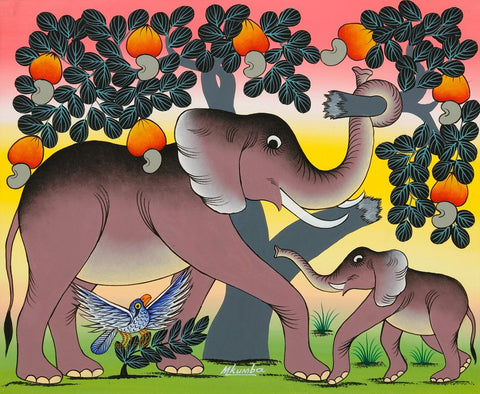
-
Distinctive Style: Tingatinga paintings, renowned for their distinct visual language, embody a captivating fusion of vibrant hues, flattened perspective, and simplified forms that collectively weave a narrative of cultural vibrancy and artistic innovation. Rooted in the rich tapestry of Tanzanian heritage, these artworks serve as vivid reflections of the country's diverse landscapes, wildlife, and daily life, while simultaneously transcending geographical boundaries to captivate audiences worldwide.
At the heart of Tingatinga paintings lies a mastery of color that breathes life into each canvas with unparalleled vitality. Bold, electrifying hues dance across the surface, infusing the compositions with a dynamic energy that commands attention. From the fiery oranges of a setting sun to the lush greens of verdant landscapes and the majestic blues of sprawling skies, the palette employed in Tingatinga artworks pulsates with the exuberance of East African vistas.
Moreover, Tingatinga artists employ a distinctive approach to perspective, opting for a flattened depiction that eschews conventional notions of depth in favor of a more graphic interpretation. This deliberate stylistic choice imbues the paintings with a sense of immediacy and accessibility, inviting viewers to engage directly with the scene unfolding before them. By flattening perspective, Tingatinga artists transcend the confines of realism, instead embracing a visual language that prioritizes expressive freedom and aesthetic impact.
Central to the allure of Tingatinga paintings are their simplified forms, which distill complex subjects into elemental shapes and lines. Whether portraying the graceful arc of a giraffe's neck, the sinuous curves of a baobab tree, or the playful antics of village children, Tingatinga artists possess a remarkable ability to capture the essence of their subjects with remarkable economy of form. This reductionist approach not only enhances the visual impact of the paintings but also imbues them with a timeless quality that transcends temporal and cultural boundaries.
Intricately woven throughout Tingatinga artworks are bold outlines and intricate patterns that serve to delineate forms and accentuate visual elements. These meticulously rendered details, often executed with precision and finesse, contribute to the overall composition's sense of harmony and balance. Whether adorning the plumage of a colorful bird, the patterned hide of a prowling leopard, or the fabric of a traditional garment, these decorative motifs add depth and dimension to the paintings, inviting viewers to immerse themselves in a world alive with texture and rhythm.
In conclusion, Tingatinga paintings represent a vibrant tapestry of color, form, and pattern that transcends mere representation to evoke the spirit and essence of East African culture. Through their bold use of color, flattened perspective, simplified forms, and intricate detailing, Tingatinga artists craft visual narratives that resonate with viewers on a deeply emotional and aesthetic level, fostering a sense of connection and appreciation for the rich cultural heritage of Tanzania and beyond.
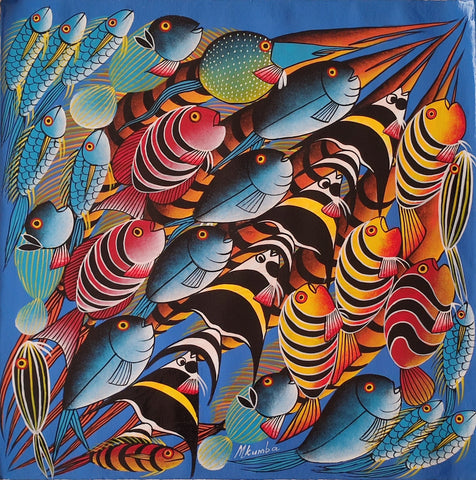
-
Materials: Traditionally, Tingatinga paintings are meticulously crafted on durable surfaces like Masonite board or canvas, employing a palette of vibrant enamel paints that infuse each piece with a captivating luminosity. Artists, wielding brushes adorned with fine bristles, navigate the surface with precision, coaxing intricate details and mesmerizing patterns into existence. With each stroke, a story unfolds, as the artist's vision materializes into a kaleidoscope of colors and forms. The process is a dance of creativity and technique, as the artist masterfully balances spontaneity with meticulousness, allowing each brushstroke to contribute to the rich tapestry of the composition. Through their skilled hands, the essence of Tingatinga art emerges, a celebration of life, culture, and the natural world rendered with unparalleled beauty and depth.
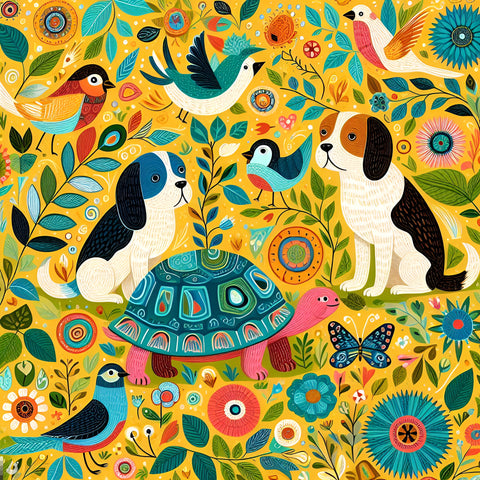
-
Subject Matter: The subject matter of Tingatinga paintings is a rich tapestry of African life and wildlife, capturing the essence of Tanzania's vibrant culture and stunning natural beauty. From majestic lions to graceful giraffes, artists infuse their works with the spirit of the African savannah, depicting iconic animals in bold and colorful compositions. Elephants roam gracefully across the canvas, their massive forms rendered with intricate patterns and striking detail. Zebras gallop in a riot of black and white stripes, while cheetahs stalk their prey with sleek elegance. Beyond the realm of wildlife, Tingatinga paintings also offer glimpses into everyday life in Tanzania, with scenes of bustling village markets, where vendors sell fresh produce and vibrant fabrics, and traditional ceremonies, where dancers move to the rhythm of drums and chants, their colorful attire swirling in the air. Villagers go about their daily routines, tending to their crops, cooking meals over open fires, and gathering together in celebration or solemn reflection. Through their art, Tingatinga painters celebrate the beauty and diversity of their homeland, inviting viewers to immerse themselves in the sights, sounds, and rhythms of East Africa.

-
Influence of Indigenous Art: Tingatinga paintings draw inspiration from a rich tapestry of traditional Tanzanian art forms, including Makonde carvings and Kanga textiles. This fusion of artistic influences manifests in the vibrant palette, intricate patterns, and cultural symbolism that define Tingatinga art. The bold patterns and stylized motifs found in Kanga textiles, which have long been used as a form of communication and expression among Tanzanian women, are echoed in the dynamic compositions of Tingatinga paintings. Similarly, the geometric designs and symbolic imagery seen in Makonde carvings, crafted by the Makonde people of southeastern Tanzania, resonate in the stylized representations of African wildlife and everyday scenes depicted in Tingatinga art. These artistic traditions not only serve as a source of aesthetic inspiration but also reflect the cultural heritage and collective identity of Tanzania, enriching Tingatinga paintings with layers of meaning and significance. Through their vibrant colors and expressive forms, Tingatinga artists pay homage to the artistic legacy of their homeland while forging new paths of creativity and innovation.

-
Expansion of the Style: While Tingatinga paintings initially gained popularity in Tanzania, they have since spread organically to neighboring East African countries and beyond, captivating art enthusiasts and collectors worldwide. What began as a local artistic movement rooted in the cultural milieu of Tanzania has transcended geographical boundaries, resonating with diverse audiences globally. The allure of Tingatinga art lies in its vibrant colors, whimsical imagery, and distinctive style, which encapsulate the spirit and vitality of East African culture. As tourists and visitors encountered these captivating paintings in Tanzanian markets and galleries, they became enamored with their unique aesthetic and cultural significance, sparking a growing international interest in Tingatinga art. Over time, the reach of Tingatinga paintings expanded, facilitated by exhibitions, art fairs, and cultural exchanges that showcased the talent and creativity of East African artists to a global audience. Today, Tingatinga art enjoys widespread acclaim and recognition, with collectors from around the world seeking out these colorful masterpieces to adorn their homes and galleries. Through their universal appeal and timeless charm, Tingatinga paintings serve as ambassadors of East African artistry, fostering cross-cultural dialogue and appreciation while preserving the rich heritage and artistic legacy of Tanzania and its neighboring countries.
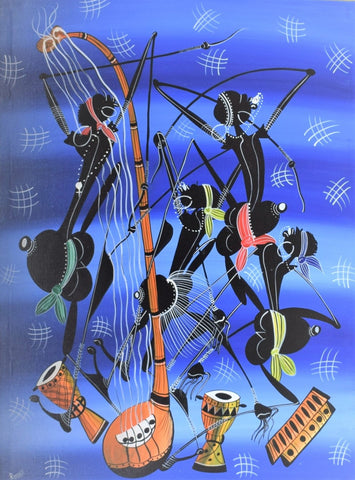
-
Entrepreneurial Spirit: Edward Said Tingatinga's entrepreneurial spirit played a crucial role in popularizing Tingatinga paintings. Born in Tanzania in the 1930s, Tingatinga embarked on a journey that would not only sustain him economically but also leave a lasting impact on the East African art scene. Faced with limited opportunities, Tingatinga turned to his passion for art as a means of livelihood. In the bustling city of Dar es Salaam, he recognized the potential of his vibrant, stylized paintings to attract both local buyers and tourists. Determined to share his artistic vision and cultivate a legacy, Tingatinga established a small art school where he generously imparted his unique painting techniques to aspiring artists. Through his guidance and mentorship, a new generation of painters emerged, each adding their own flair to the Tingatinga style while staying true to its essence. This nurturing environment not only facilitated artistic growth but also fostered a sense of community among artists, who shared ideas, techniques, and experiences. As Tingatinga's reputation grew, so did the demand for his distinctive paintings, both locally and internationally. His dedication to teaching and promoting the Tingatinga style contributed to its proliferation, solidifying its status as a celebrated form of African art. Today, Tingatinga paintings are cherished for their colorful depictions of African life and wildlife, a testament to Tingatinga's entrepreneurial vision and enduring legacy in the world of art.

-
Global Recognition: Tingatinga paintings have been exhibited in galleries and museums around the world, including the British Museum in London and the Museum of African Art in New York City. They are highly sought after by collectors for their cultural significance and artistic merit.
-
Evolution of the Style: Over time, Tingatinga art has undergone a fascinating evolution, diversifying its expressive range as contemporary artists infuse it with new themes, techniques, and materials. Rooted in the traditional Tingatinga style established by Edward Said Tingatinga, these modern interpretations serve as dynamic reflections of the shifting social and cultural tapestry of East Africa. In the hands of today's artists, Tingatinga paintings transcend their historical boundaries, embracing a multitude of narratives and perspectives. While the iconic imagery of African wildlife and village life remains prevalent, artists now explore a broader spectrum of subjects, including urban landscapes, political commentary, and personal narratives. This expansion of themes mirrors the complexities of modern East African society, offering viewers a deeper insight into its multifaceted identity. Moreover, contemporary Tingatinga artists experiment with innovative techniques and materials, pushing the boundaries of the traditional style while still honoring its foundational principles. From mixed media compositions to large-scale installations, these artistic innovations redefine the possibilities of Tingatinga art, captivating audiences with their creativity and ingenuity. As East Africa continues to undergo rapid social, economic, and environmental transformations, Tingatinga art evolves as a vital mirror, reflecting the joys, struggles, and aspirations of its people. Through their bold experimentation and creative exploration, contemporary Tingatinga artists contribute to the ongoing narrative of East African art, enriching its legacy and ensuring its relevance in the global artistic landscape.

-
Cultural Preservation: Tingatinga paintings are not merely vibrant artworks; they embody a profound cultural significance, serving as custodians of Tanzanian heritage while fostering indigenous artistic expression. Through their vivid imagery and intricate patterns, Tingatinga artists narrate the essence of everyday Tanzanian life, capturing the pulsating rhythm of village scenes, the vibrant hues of bustling marketplaces, and the rhythmic beats of traditional ceremonies. These paintings act as vivid chronicles, immortalizing the rich tapestry of Tanzanian culture for generations to come. Moreover, Tingatinga art serves as a poignant ode to the diverse and abundant biodiversity of East Africa. From majestic lions and graceful giraffes to colorful birds and lush landscapes, Tingatinga paintings celebrate the region's natural splendor with a reverence that echoes the profound connection between the people and their environment. Through their meticulous brushstrokes and imaginative compositions, Tingatinga artists not only document but also exalt the multifaceted facets of Tanzanian cultural identity, infusing each stroke with a sense of pride, resilience, and belonging. In this way, Tingatinga paintings transcend mere aesthetics; they become vibrant testaments to the enduring spirit of a nation and its people, perpetuating a legacy of creativity, heritage, and cultural vibrancy that resonates far beyond the canvas.
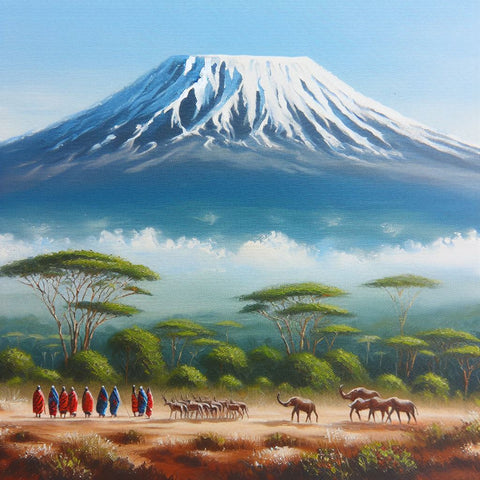
-
Community Impact: The success of Tingatinga paintings has had a profound and far-reaching impact on the communities where they are created. Through their vibrant colors and distinctive style, Tingatinga artworks have become a source of sustainable income for many local artists, providing them with a means to support themselves and their families. This economic empowerment not only improves the livelihoods of individual artists but also contributes to the overall prosperity of the community by injecting money into the local economy. As artists sell their paintings to tourists and collectors, they generate revenue that circulates through businesses and services in the area, from art supply stores to transportation providers. Additionally, the popularity of Tingatinga art has led to the establishment of art galleries, workshops, and cultural centers, further stimulating economic growth and fostering a sense of pride and identity within the community. Furthermore, the success of Tingatinga paintings has created opportunities for collaboration and skill-sharing among artists, as they come together to learn from each other, exchange ideas, and collectively elevate their craft. This sense of camaraderie and mutual support strengthens the social fabric of the community and fosters a culture of creativity and entrepreneurship. Overall, the economic success of Tingatinga paintings transcends individual artists, enriching the lives of entire communities and leaving a lasting legacy of prosperity and cultural vitality.
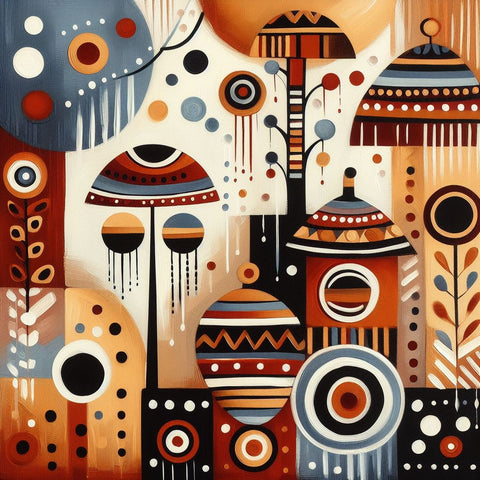
-
Tourist Attraction: Tingatinga art has become a cherished emblem of East African culture, captivating tourists in Tanzania and neighboring countries with its kaleidoscopic vibrancy and captivating charm. Its rise as a tourist attraction is a testament to its ability to encapsulate the essence of the region, drawing visitors into a world where vivid hues dance across the canvas, evoking the pulsating rhythms of African life. Each stroke of paint tells a story, weaving together the rich tapestry of local traditions, folklore, and natural wonders. From bustling market scenes to majestic wildlife portraits, Tingatinga paintings offer a window into the soul of East Africa, inviting travelers to immerse themselves in its vibrant tapestry of sights and sounds. The whimsical imagery and bold patterns of Tingatinga art resonate deeply with visitors, sparking joy and wonder as they explore its intricacies. More than just decorative pieces, these paintings serve as cherished mementos of travelers' journeys, capturing the essence of their East African experience in a single stroke of the brush. Whether adorning the walls of safari lodges or gracing the shelves of souvenir shops, Tingatinga art holds a special place in the hearts of those who encounter it, serving as a tangible reminder of the beauty and diversity of the African continent.
In summary, Tingatinga African paintings are not only visually striking works of art but also represent a rich cultural heritage and a testament to the ingenuity and creativity of Tanzanian artists. Through their vibrant colors, bold patterns, and distinctive style, Tingatinga paintings continue to captivate audiences around the world and serve as a vibrant expression of East African culture.


